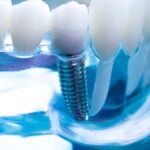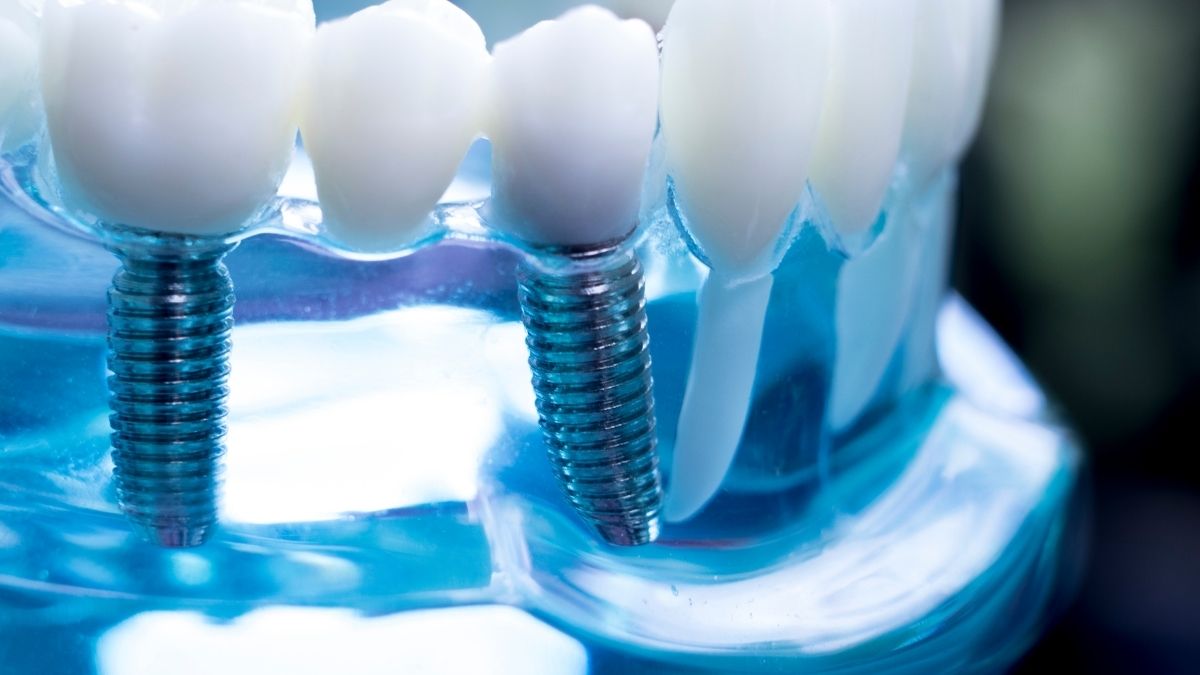Introduction
The world of dentistry has witnessed a myriad of innovations over the decades, from the simple evolution of braces to the complex procedures of dental surgeries. Among the most groundbreaking developments in recent times is the introduction of technology, particularly 3D printing, into dental implantology. Imagine a world where dental implants are no longer generic but are customized uniquely to each individual, promising not just a perfect fit but also enhanced comfort. This is not science fiction; it’s the transformative reality of dental care today. Let’s delve into this fascinating journey of how 3D printing is revolutionizing implant design!
What is 3D Printing in the Context of Dental Medicine?
3D printing, a term synonymous with futuristic technology, is the process of creating three-dimensional solid objects from a digital file. Though initially popularized in industries like automotive and fashion, its waves have inevitably reached the shores of medical sciences.
In the realm of dental medicine, 3D printing has ushered in an era of unprecedented precision and customization. Gone are the days when dental solutions were one-size-fits-all. With 3D printing, dentistry has taken a quantum leap towards tailor-made solutions that cater to individual requirements.
Brief History:
- 1984: 3D printing concept introduced
- Early 2000s: First experiments in medical applications
- 2010 onwards: Rapid adoption in dental and orthopedic sectors
Table: Applications of 3D Printing in Medical Fields
| Field | Application |
| Orthopedics | Custom bone structures |
| Cardiology | Heart valves |
| Dental Implantology | Tailored implants and dental bridges |
The Intersection of Dental Implantology and 3D Printing

At the crossroads of innovation and healthcare, dental implantology met 3D printing. And what a transformative meeting it has been! The synergy between these two fields has not only optimized dental care procedures but has also brought smiles (quite literally) to countless faces.
Why is 3D Printing Significant in Dental Implant Design?
- Customization: The beauty of 3D printing lies in its ability to produce items tailored to individual specifications. In the world of dental implantology, this means creating implants that resonate harmoniously with a patient’s anatomy, ensuring a snug fit and a natural feel.
- Speed: Traditional dental implant production could take weeks, if not months. With 3D printing, this duration has drastically reduced, ensuring patients get their solutions faster, without compromising on quality.
- Material Innovations: 3D printing has unlocked the door to a plethora of biocompatible materials that were previously considered unfeasible for dental implants. This means more options, better durability, and enhanced comfort for the patient.
Case Study: Dr. Anna Thompson, a renowned dental surgeon from New York, once encountered a challenging case of a patient requiring an unusually shaped dental implant. Traditional methods failed. However, with the help of 3D printing technology, she designed an implant perfectly suited to the patient’s unique anatomy, leading to a successful surgery and a very happy patient.
Benefits of 3D Printed Dental Implants
The digital revolution in the dental domain, led by 3D printing, has been nothing short of a blessing for both professionals and patients. Let’s explore the myriad of benefits it offers:
Precision and Accuracy
Every individual’s oral structure is unique. One of the major pitfalls of traditional implant methods was their reliance on standardized shapes and sizes. With 3D printing, this concern is virtually eliminated. Advanced imaging techniques capture the minutiae of a patient’s mouth, and the implant is designed to these exact specifications.
Fact: A study by the International Journal of Dentistry found that 3D printed implants had a 98.5% success rate due to their precision.
Patient-specific Designs
- Comfort First: Tailored implants mean fewer post-procedure complications and adjustments. The patient experiences a natural feel, much like their original teeth.
- Aesthetically Pleasing: 3D printed implants can be designed to match the color, shape, and size of a patient’s natural teeth, leading to a seamless integration and a confident smile!
Cost-efficiency
While the initial costs of 3D printing equipment can be significant, the long-term savings are substantial:
- Material Optimization: 3D printing uses only the necessary amount of material, reducing waste.
- Less Labor-intensive: Automated processes mean fewer man-hours, translating to cost savings.
“Quality is the best business plan.” – John Lasseter. And with 3D printed dental implants, quality meets affordability.
The Process of 3D Printing Dental Implants

From the initial consultation to the final implantation, let’s walk through this marvel of modern dentistry:
From Scan to Implant Design
- Digital Imaging: The first step involves capturing high-resolution images of the patient’s oral structure using scanners like CBCT (Cone Beam Computed Tomography).
- Designing with Software: These images are then fed into specialized software where dental professionals can design the implant, making necessary adjustments for the perfect fit.
Material Selection
Selecting the right material is pivotal. Here are a few popular choices:
- Titanium: Known for its strength and biocompatibility.
- PEEK (Polyether Ether Ketone): A high-performance thermoplastic, suitable for patients allergic to metals.
The Printing Process
- Layer-by-Layer: 3D printing works by depositing material layer by layer, building the structure gradually.
- Post-Processing: Once printed, the implant undergoes post-processing which includes cleaning, sterilizing, and sometimes coloring.
Case Study: Smile Dental Clinic in Toronto adopted 3D printing in 2021. Within a year, they reported a 30% increase in patient satisfaction and a 20% reduction in costs.
Challenges and Concerns in 3D Printed Implantology
In the midst of the glowing praises and the transformative impact of 3D printing in dental implantology, it’s crucial to pause and reflect on the challenges and concerns that come with it. After all, with every great innovation, there’s a set of hurdles to cross and questions to address.
Regulatory and Approval Hurdles
The realm of medical science is, understandably, one of the most regulated. Introducing a novel technology like 3D printing into the mix amplifies these challenges:
- Varied Global Standards: Different countries and regions have their own sets of medical standards. What might be permissible in one region might require additional scrutiny in another. As 3D printing in dental implantology gains traction globally, navigating these varied regulations can be a labyrinthine task.
- Certification Challenges: The certification process for medical equipment and procedures is exhaustive. For 3D printed dental implants, this means meeting rigorous criteria and undergoing extensive tests before they can be deemed safe for public use.
- Continuous Updates: The dynamic nature of 3D printing technology means that it’s continually evolving. While this is great for innovation, it also means that regulatory bodies need to be perpetually updated, ensuring that newer methods and materials still conform to safety and efficacy standards.
“Regulation is essential. The challenge is to navigate it effectively for the betterment of patient care.” – Dr. Elena Richards, Dental Surgeon
Durability and Long-term Performance
The promise of 3D printed dental implants is undeniable. However, since it’s a relatively newer entrant in the world of dentistry, questions about its durability and long-term performance are natural:
- Comparative Analysis: While initial data shows promising results for 3D printed implants, comprehensive studies that compare their longevity and performance against traditional implants are still in progress.
- Material Evolution: The materials used in 3D printed implants, though advanced, are still evolving. How they fare in the long run, under various conditions, is a topic of ongoing research.
- Patient Feedback: Anecdotal evidence from patients has been overwhelmingly positive. However, a systematic collection and analysis of patient feedback over extended periods will provide more concrete data on the implants’ performance over time.
- Continuous Monitoring: As with all medical implants, continuous monitoring and periodic check-ups are crucial. This not only ensures the implant’s functionality but also provides invaluable data that can inform future innovations in the field.
Case Study: A five-year study conducted in Germany on patients with 3D printed dental implants revealed a success rate of 97%. While this is promising, the study also emphasized the importance of regular dental check-ups and the use of advanced materials to ensure implant longevity.
Future Prospects: Where is 3D Printing in Dental Implantology Headed?
The horizon of 3D printed dental implantology is shimmering with potential, and the journey has just begun.
Innovations on the Horizon
- New Materials: As research progresses, we can expect the introduction of even more biocompatible materials, potentially offering greater strength and flexibility.
- Faster Printing Processes: Time is of the essence, and the future may witness even quicker production methods, further reducing the wait time for patients.
Broader Accessibility
The dream is simple: Quality dental care for all!
- Democratizing Dental Care: With cost reductions and technological advancements, 3D printed dental solutions might soon become accessible to larger sections of the population, including those in remote or underserved areas.
Case Study: A community initiative in Nairobi, Kenya, introduced a mobile dental clinic equipped with 3D printers. Within months, they provided over 2,000 individuals with customized dental solutions, many of whom had never visited a dentist before.
Conclusion: Embracing the Revolution in Dental Implant Design
As we stand on the precipice of a new era in dental care, it’s both exhilarating and essential to look back and appreciate the monumental shifts that have brought us here. 3D printing in dental implantology isn’t just a fleeting trend; it symbolizes a paradigm shift in how we perceive and execute dental care.
The transformative potential of 3D printing in this domain is multifold:
- Personalized Care: Gone are the days of one-size-fits-all solutions. We’re ushering in an era where each implant is as unique as the individual receiving it. This personal touch not only enhances comfort but also augments the success rates of implants.
- Efficiency and Speed: No longer do patients have to endure long waiting times for their implants. With 3D printing, precision and speed go hand in hand, delivering quality solutions in a fraction of the traditional time.
- Innovation in Materials: The spectrum of materials available for 3D printing continues to expand, paving the way for implants that are stronger, more biocompatible, and aesthetically in sync with natural teeth.
- To dental professionals: This revolution is a clarion call. It’s an invitation to expand your horizons, embrace the technology, and lead the charge in offering state-of-the-art care to your patients. Continuous learning and adaptation are key. Workshops, seminars, and courses on 3D printing in dental implantology are becoming increasingly accessible, providing a wealth of knowledge and hands-on experience.
- To patients: The future of dental care is here, and it’s spectacular! As beneficiaries of this technological marvel, staying informed about the latest advancements can empower you to make the best choices for your oral health. Engage with your dentists, ask questions, and be an active participant in this journey.
Frequently Asked Questions (FAQs)
As 3D printing in dental implantology continues to pique interest and curiosity, several questions naturally arise. Here, we address some of the most commonly asked questions to shed light on this groundbreaking technology.
How long do 3D printed dental implants last?
The longevity of 3D printed dental implants can be comparable to traditional implants, often designed to last many years. However, several factors influence their lifespan:
- Material Used: Advanced materials used in 3D printing, like Titanium and PEEK, have shown promising durability.
- Oral Hygiene: Regular dental check-ups, proper cleaning, and oral care can extend the life of the implant.
- Individual Factors: Things like a patient’s bone density, lifestyle habits (like smoking), and overall health can impact the longevity of the implant.
While initial data is encouraging, it’s essential to note that 3D printing in dental implantology is relatively new, and ongoing long-term studies will provide more concrete answers in the future.
Are 3D printed dental implants safe?
Absolutely! Safety is paramount in the world of medical sciences, and 3D printed dental implants are no exception.
- Biocompatibility: The materials used for 3D printed implants, like Titanium and PEEK, are biocompatible, meaning they’re designed to work harmoniously with the human body.
- Rigorous Testing: Before being approved for public use, 3D printed implants undergo a series of rigorous tests and quality checks to ensure their safety and efficacy.
- Customization: The very essence of 3D printing is personalization. Implants tailored to an individual’s unique anatomy reduce the risk of misfits or complications.
It’s always essential, however, to consult with your dental professional and ensure you’re receiving implants from a reputable source.
How do 3D printed implants compare in cost to traditional implants?
The cost dynamics of 3D printed dental implants are multifaceted:
- Initial Equipment Cost: Setting up 3D printing facilities can be capital-intensive. However, once operational, they can produce implants at a fraction of the traditional method’s cost.
- Material Efficiency: 3D printing is known for its material efficiency, using just the right amount of material needed for the implant, reducing wastage and, consequently, costs.
- Labor Costs: The automation associated with 3D printing can mean reduced labor costs in the long run.
- Patient Perspective: From a patient’s viewpoint, the costs might be comparable to traditional implants, especially in the early phases of adoption. However, the added benefits of personalization, reduced waiting times, and potential for fewer post-procedure complications might offer more value for money.








